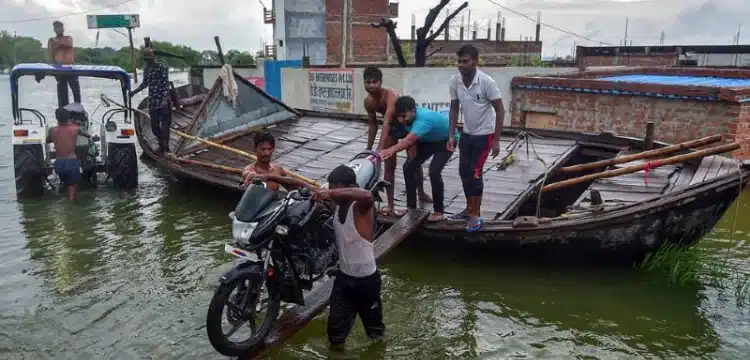[vc_row][vc_column][vc_column_text dp_text_size=”size-4″]New Delhi is facing a major crisis as officials work urgently to open flood gates at a barrage on the Yamuna River. The river’s water levels have surged to their highest in 45 years due to heavy rainfall in the city and nearby hilly regions, leading to severe flooding and disruptions across the capital.
Efforts are underway to drain the floodwater and alleviate the situation. Emergency personnel, including the army and disaster relief teams, are working to repair a broken drain regulator near the Supreme Court to stop water from flowing onto a key road. Additionally, officials are attempting to create a dam by stacking sacks to prevent further water inflow into the city.
The flooding has caused traffic chaos and submerged historical landmarks. Television footage shows water surrounding the walls of the iconic Red Fort, while vehicles are partially submerged in several areas. Tragically, at least three deaths due to drowning have been reported.
Also Read: WiFi Routers: The Secret X-ray Vision
The Rajghat memorial, dedicated to Mahatma Gandhi, is also affected by the flooding, with water entering the memorial area. Several private and government offices, including the police headquarters, in the ITO area have also been inundated.
To mitigate the water crisis, one of the three closed water treatment plants has resumed operations, providing some relief in water supply. Efforts are ongoing to reopen five jammed gates at the downtown barrage to restore the flow of the river.
Delhi has experienced rainfall that is 91% above-normal this monsoon season, with heavy rainfall recorded in July. The situation remains challenging, with the city grappling with the impact of the ongoing flooding and striving to protect lives and property from further damage caused by the surging Yamuna River.[/vc_column_text][/vc_column][/vc_row]











